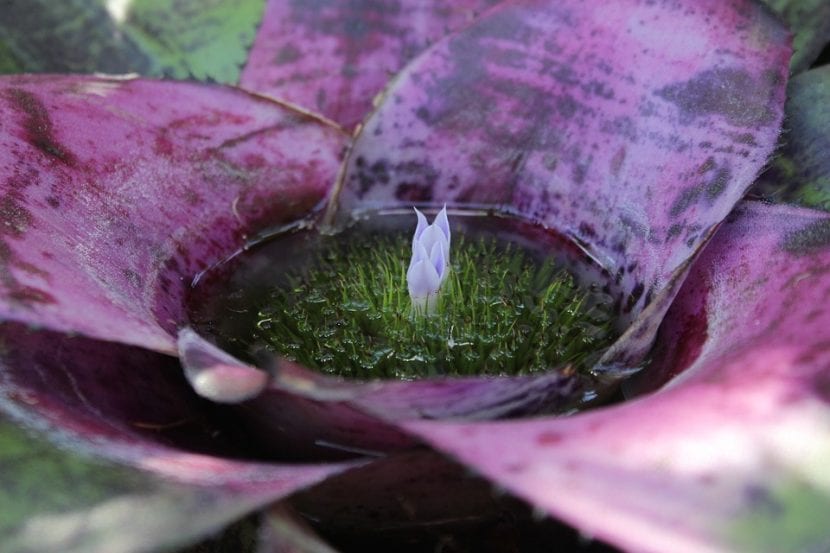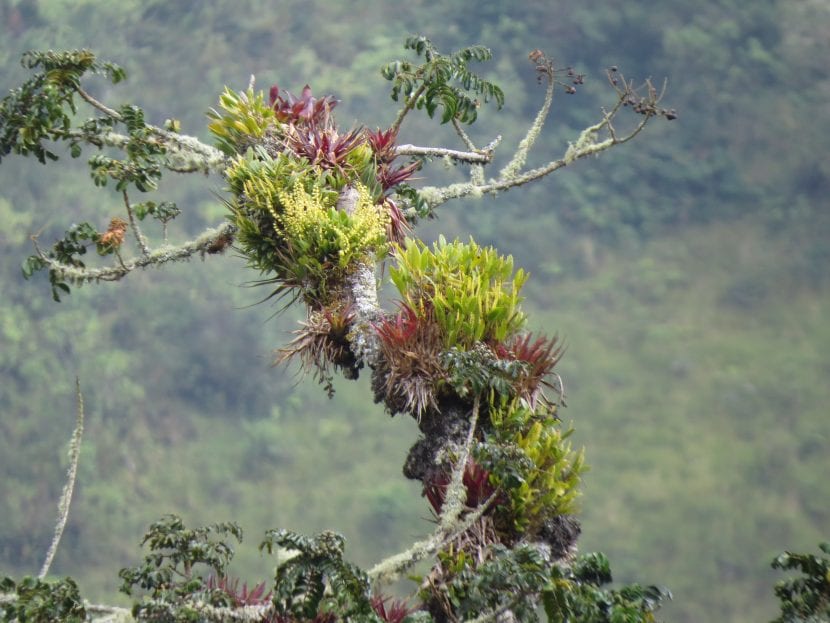
All the Bromeliaceae They form a family of plants that we love to have both indoors and in gardens, especially tropical or subtropical ones. They form rosettes of leaves of such cheerful and beautiful colors that it is impossible not to want to stop to look at them.
Known as bromeliads, it is estimated that there are about 1520 species divided into 51 genera; In other words, there are so many that when the weather is good, you can have a very interesting collection. But, what are their characteristics?
Origin of bromeliads

Image - Flickr / Alejandro Bayer
They are plants typical of the warm regions of the Americas, although there is a species of Pitcairnia that is from Africa. They are usually found in the humid forests, but there are also some that inhabit rather dry places.
Depending on the conditions of the place, as well as their own evolution, they can be epiphytes (growing on the branches of trees to take better advantage of the humidity), or of terrestrial habit.
What are their characteristics?

The Bromeliaceae They are perennial, epiphytic or terrestrial herbs, which form rosettes of leaves that can reach maximum heights of 3 to 4m. The flowers are grouped in spikes, clusters or heads and can be of different colors, from pink to purple, going through yellow, red or even bicolor. They are generally bisexual.
The roots can be aerial and serve to grip and absorb moisture, or terrestrial and serve to anchor the plant to the ground. Sometimes they are absent, as is the case with the tillandsia aeranthos call air carnation. The fruit is a capsule, a berry or a sorosis (in the case of Ananas or pineapples). The seeds are winged and / or hairy.
Subfamilies
There are three:
- bromelioideae: formed by 32 genera composed of 780 species. It is the one that is most cultivated. Here come the Ananas, Billbergia, Bromelia, Neoregelia, Nidularium or Wittrockia for example.
- Pitcarinioideae: it is a genus of bromeliads typical of arid regions. It is made up of about 12 genera, among which are the Dyckia, Hechtia or the Puya.
- tillandsioideae: it is made up of nine genera with almost 1250 species. The most popular are Guzmania, Tillandsia or Vriesea.
Have you been wanting more? Click to find out how to take care of themselves 🙂.